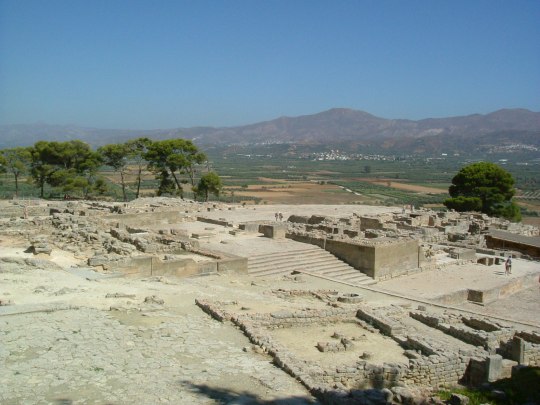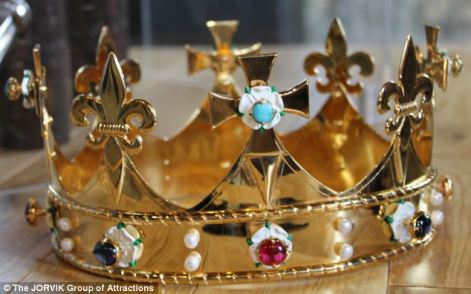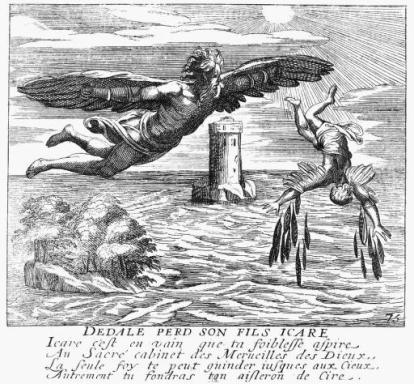Chronology of Bronze Age Crete (3000-1450 BC)
UNLIKE the Egyptians, the Babylonians and the Hittites, the Cretans of the second millennium BC left little written history. What they did leave were inscriptions on clay which have become known as Linear A and Linear B. Linear A is as yet undeciphered, but probably developed from Cretan hieroglyphics (c.1900-1600 BC) and is possibly a form of the Cretan/Minoan language, from which Linear B most likely evolved. Linear B was deciphered by Michael Ventris in 1952 as an early form of ancient Greek and of Mycenaean origin (Mycenae is on the mainland of Greece) rather than Minoan. It does not help a great deal with the historical background of Crete as it is administrative by nature but it does give an insight into the island’s commercial activities. Sort of annual accounts. Okay, better than nothing. But it can lead to some ambiguous (well, unproven) conclusions on Minoan life. But it’s fun to guess.


Minoan Linear A Mycenaean (Greek) Linear B
We’re not sure what the ancient Cretans were called in the Bronze Age, although it appears they may have been known as the ‘Kleftiu’ by the Egyptians. ‘Minoan’ Crete was a name given to the ancient islanders by Sir Arthur Evans simply based on the myth of their ancestor and founder, King Minos (more on him next week). Evans said, “To this early civilization of Crete as a whole I have proposed – and the suggestion has been generally adopted by the archaeologists of this and other countries – to apply the name ‘Minoan’.” In fact, he wasn’t the first to come up with the name but we won’t go there.
![sir-arthur-evans-at-knossos-in-l907[1]](https://drdudsdicta.files.wordpress.com/2014/06/sir-arthur-evans-at-knossos-in-l9071.jpg?w=334&h=466)
Arthur Evans at Knossos (painting from the Ashmolean Museum, Oxford – the museum is well worth a visit for a ‘taste’ of the Minoan world)
It was Evans who first used the pottery styles found at Knossos to divide the Minoan civilization into three phases: Early, Middle and Late Minoan (EM, MM, LM respectively). The phases run nearly parallel to the tripartite division of Egyptian history into Old, Middle and New Kingdoms from 3000-1100BC. This does make it simpler ….. honest.
The basic tripartite scheme was further subdivided, based on pottery styles and stratigraphy, such that each of the three periods contained three or more divisions (EM I, II, III). These were then further subdivided into units indicated by letters of the alphabet (for example, LM IB). As additional excavations and studies have been undertaken this system has come under criticism for being too inflexible and partly inaccurate. But we won’t dwell on this.

Sir Arthur Evans immortalized at Knossos (and rightly so)
Chronology identity was not all Arthur Evans did. He made some groundbreaking discoveries on the Minoan civilization as a result of his excavations at the ‘palace’ site of Knossos, funded by his own wealth. However, he proceeded to reconstruct the palace using his own imagination of how it may have looked. This was partly for his own interest and partly for conservation purposes. This has proven somewhat controversial as, of course, it may be inaccurate. Also it has restricted further excavations at the site. But there are those who like it as it gives the site some perspective. You can make your own mind on that if you have been there or ever go there. Compare it with the non-reconstructed sites of Malia and Phaistos. Anyway, I digress.
Emergence of ‘palaces’
The Middle Minoan (MM) civilization has become known as a highly developed hierarchical society culminating in ‘palace’ buildings. But how did this come about? What must first be considered is what is meant by the word ‘palace’ in relation to the Middle and Late Minoan periods of Crete. A modern-day understanding of the word is a large and impressive residential building for a wealthy royal family. Minoan ‘palaces’ were certainly large and for the wealthy, but not necessarily for royalty, as it is not known who lived in them other than that they must have had some authority. They may have been Priests – or Priestesses – or Priest Kings if the ‘palaces’ were of a religious nature (they appear to have been involved in cult practices). However, for convenience sake these Minoan buildings will be referred to as ‘palaces’ as their architectural design warrants the word. So there. The main palace sites (in descending order of size) were Knossos, Phaistos, Malia and Kato Zakros. Also, recent discoveries at Galatas, and possible Petras, indicate smaller palatial residences. Of course, there are possibly more, as yet, undiscovered.

Minoan ‘palace’ sites on Crete
The old palaces of the proto-palatial period (c.1900-1700/1650BC) may have incorporated nearly all the basic features and infra-structures of the new palaces of the neo-palatial period (1700/1650-1450BC). These ‘features’ being a central court, west court, storage magazines, residential quarters, banquet hall, public/administrative apartments, cult rooms, theatral area and workshops. It is difficult to be certain due to the destruction of most the old palaces to make way for the new. Little of the old sites remain in evidence other than the foundation to the west façade of Phaistos, as here the new palace was not built immediately above it. After the destruction of the old palaces the neo-palatial sites, particularly at Knossos, Phaistos and Malia, were all enlarged with grander and more imposing styles.
The building of palaces required large surpluses of wealth, and it is this emergence of wealth that must account for the emergence of palaces. ‘Wealth’ may be defined as possession of goods for their desirability and not for their usefulness. For example, gold is desirable but not always of great use compared with practical or domestic items of bronze or ceramics. Okay, it’s otherwise known as ‘greed’.

North entrance to the ‘palace’ of Knossos … er, well, not exactly 3000 years old, but about 100 years old as this was the reconstruction by Sir Arthur Evans – so it may not have look anything like this (useful, huh?)
But how was this wealth obtained? When land no longer becomes readily available to all due to an increase in population, inequalities develop and those with no land become labourers. This leads to the possibility of the beginning of a hierarchy. As time goes on, specific individuals who are able to best exploit the ‘inequalities’ become the elite. These elite ‘families’ then compete within themselves for power and one way to exercise power is to display wealth by way of hospitality through dinner parties or gift-giving (xenia). So the elite needed investment and this leads to a revolution in agricultural products, centralization, movement of surplus, redistribution, rapid population growth and a more organized/controlled settlement. Otherwise known as ‘power’. You know the feeling …..

Here’s the throne room at Knossos, created …… er, 100 years ago by Arthur Evans

Here’s the 3000 year old throne room at Knossos as Evans found it 100 years ago (1900 actually) – the throne and benches were there but that’s about it
Initially farmers only needed to grow only enough to keep the immediate family alive from year to year which may assume some surplus to ensure survival. Also the family produced domestic goods such as pots and utensils for their own use and essential to their own needs. This would extend to less domesticated luxury goods. As farms increased in size, both in acreage and population, so too did the community, and distribution of excess produce and luxury goods led to wealth. Yummy.

The possible ‘throne room’ (or area as ‘el fresco’) at Malia from the central court – this is something like Knossos may have looked like if Evans hadn’t reconstructed some of it (ignore the object centre/right foreground – it’s a cannon ball but Venetian, not Minoan!)
Due to its position in the Mediterranean, Crete would have had some contact with overseas travellers from the surrounding continents, Asia, Africa and Europe, and there is evidence of trade connections with these regions. There must be a close link between social and commercial progress: trade in various products with other countries brought in new ideas which led to more trade, both within Crete and outside, which led to an increase in wealth for the traders. The finding of sealstones (mostly by Evans) on some sites indicated movement and identification of goods, which required development of administration in a land becoming more organized (Linear A – pay attention: see above). Such development would require employment of labourers and craftsmen to keep up with the volume of demand. Larger houses would have been built to accommodate the wealthy. Get it?

The palace site of Phaistos (central court in far background) – also without Arthur Evans reconstructions
Destruction and coming of the Mycenaeans
It is not known for certain what caused the demise of the Minoan civilization. One suggestion was a tsunami from the Theran volcanic eruption but the dating doesn’t match; another is earthquake but the island has survived those before. All that is known is that around 1450BC a disaster struck the island of Crete and its civilization came to an end and the Mycenaeans from the Argolid of the eastern Peloponnese on mainland ‘Greece’ appeared to have taken control of Knossos (possibly taking advantage of earthquake-weakened Minoan defences). Whether the Mycenaeans were a part of this destruction is not clear but they may well have been covetous of the Minoan wealth and trade links. Makes sense.

Earthquake damage at the small palace site of Galatas
The Mycenaeans remained in Knossos for around 200 years before another unknown disaster brought an end to the island’s civilized world. But more on the Mycenaeans another day.
For more info on various Minoan sites in Crete click here
Next week: The Minoans and mythology
ASIDE
I see that the Plantagenet Alliance has had the same result as Richard III did at Bosworth – failure. At the Judicial Review hearing the High Court decided that it was not necessary for consultation with ‘other parties’ about the reburial of Dick’s bones. One of the judges, Lord Justice Ouseley, remarked: “Richard III would have raised an eyebrow if he’d been told there would be public consultation on his reburial 500 years on. Kings of that era weren’t democrats.” Humour from a judge? … or cynicism for the whole lengthy process … or just stating a fact?. So Leicester Cathedral it is. A 15th century-style gold-plated crown has even been commissioned by the historian, Dr John Ashdown-Hill, for the funeral ceremony. Nice touch but merely ‘gold-plated’? – it is hardly befitting a monarch! Anyway, it is/was being displayed in York just to show its connection has not been forgotten before going ‘on tour’ around the UK.

Richard III’s gold-plated funeral Crown
Artemus Smith’s Notebooks
I continue my research of the notebooks of Dr Artemus Smith, archaeologist of great courage, determination and fiction. Here is another extract:
I met my good friend Jasper Rochweiller yesterday and he said to me:
“I say Artemus, old boy, close shave the other day. My good lady sent me out to purchase a bag of fresh snails from our local delicatessen. She was determined to expand our culinary delights. Well, I bought the bag of snails but on the way back I meet some of my students who insisted I went for drink with them. Rude to say no and one, of course, lead to another, and so it went on for over two hours. Got back home a little worse for wear. As I put my key in the door the bottom fell out of the bag containing the snails – it had been sitting on a beer covered table and got rather wet – and all the snails fell to the ground. At the very same time the good lady opened a window and asked me in no uncertain manner where the devil I had been all this time.
Ignoring her, I looked down at the snails on the ground and said in very loud voice, “Nearly home boys.””



















![sir-arthur-evans-at-knossos-in-l907[1]](https://drdudsdicta.files.wordpress.com/2014/06/sir-arthur-evans-at-knossos-in-l9071.jpg?w=334&h=466)








